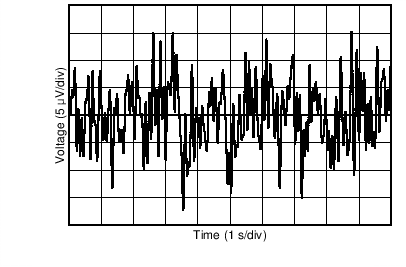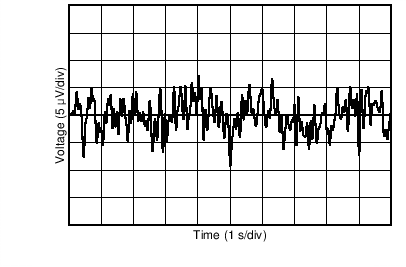SBOSA80 December 2021 REF20-Q1
PRODUCTION DATA
- 1 Features
- 2 Applications
- 3 Description
- 4 Revision History
- 5 Device Comparison Table
- 6 Pin Configuration and Functions
- 7 Specifications
- 8 Parameter Measurement Information
- 9 Detailed Description
- 10Applications and Implementation
- 11Power-Supply Recommendations
- 12Layout
- 13Device and Documentation Support
- 14Mechanical, Packaging, and Orderable Information
Package Options
Mechanical Data (Package|Pins)
- DDC|5
Thermal pad, mechanical data (Package|Pins)
Orderable Information
8.4 Noise Performance
Typical 0.1-Hz to 10-Hz voltage noise can be seen in Figure 8-7 and Figure 8-8. Device noise increases with output voltage and operating temperature. Additional filtering can be used to improve output noise levels, although care must be taken to ensure the output impedance does not degrade ac performance. Peak-to-peak noise measurement setup is shown in Figure 8-9.
 Figure 8-7 0.1-Hz to 10-Hz Noise (VREF)
Figure 8-7 0.1-Hz to 10-Hz Noise (VREF) Figure 8-8 0.1-Hz to 10-Hz Noise (VBIAS)
Figure 8-8 0.1-Hz to 10-Hz Noise (VBIAS)
Figure 8-9 0.1-Hz to
10-Hz Noise Measurement Setup